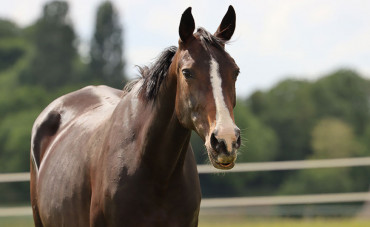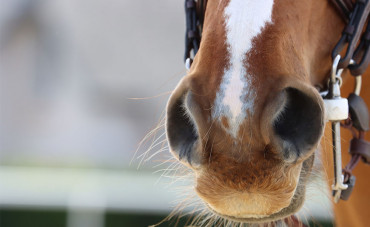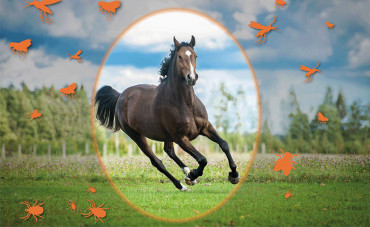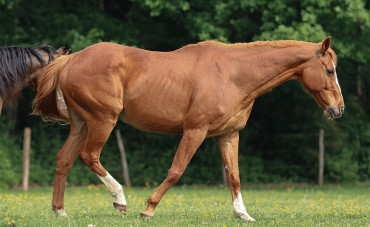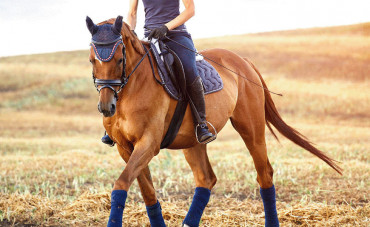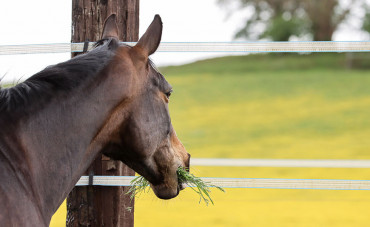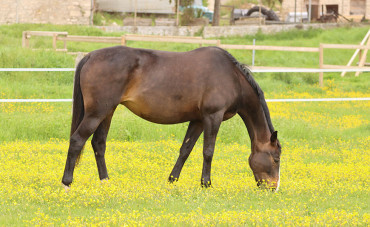Your horse is a herbivore, but do you know how its digestion works? Read on to find out more as we take a closer look at the three key organs: the stomach, the small intestine and the large intestine.
For this third and final part, we’re going to focus on the large intestine.
How does your horse’s large intestine work?
The large intestine represents around 60% of your horse’s total digestive system, and its volume is around 110 L (about the capacity of a small bathtub). Your horse’s large intestine is divided into several parts:
- The cecum: which plays a role in sorting the particles that pass through (small particles remain here for longer)
- The ascending colon: a long, folded tube with four zones of varying diameters. This is where foods remain the longest
- The descending colon and the rectum
Unlike the other two compartments, no secretions are produced here, as the mode of digestion changes.
Put simply, in the large intestine, we switch to bacterial digestion, and it is here that forage will be digested and assimilated. It’s also here that, as well as digesting forage and the rest of the concentrates, the various nutrients will be absorbed:
- Glucose
- Amino acids
- Fatty acids
- Minerals and trace elements
- Vitamins
In addition, most of the water is absorbed here. This is where your horse really gets hydrated!
Focus on your horse’s intestinal flora.
In the section above, we spoke about bacterial digestion. Before taking a look at dietary recommendations, it’s important to consider this bacterial digestion and talk about your horse’s intestinal flora.
Unlike the two other compartments, the stomach and the small intestine, the large intestine is “living”. This means that a host of microorganisms are found there, including bacteria. Many different types of bacteria exist, all playing a role: for example, cellulolytic bacteria will digest cellulose (fibres, roughly speaking), while amylolytic bacteria will digest starch.
What is essential is that this bacteria community remains as complete as possible and, as such, it’s important to ensure the correct environment. In short, bacteria are made to function in very particular conditions and if their environment is changed, they may become less effective or not at all effective.
Food recommendations for your horse
Dietary practices play a role in the good health of the large intestine; here are the main dietary recommendations to keep your horse in top form.
- Offer your horse as much forage as possible
Remember that your horse is a herbivore. As such, it is made to digest forage, and in very large quantities. Forage (hay, grass, etc.) contains sugars, these are the best form of energy for your horse.
That’s why it’s important to offer your horse the right amount of forage. As well as limiting acidity throughout the digestive system ( by eating forage, the horse produces saliva, which buffers the stomach), this forage “nourishes” the bacteria of the large intestine, which will then be able to provide the horse with the necessary energy, as well as the various nutrients it needs (minerals, vitamins, etc.).
- Limit quantities of starch per meal
As we’ve already seen, feeding your horse a diet too high in starch will increase the risk of gastric ulcers. However, it also increases the amount of acid produced in the stomach.
If the stomach’s contents are more acidic, the small intestine will be acidified as these pass through, in turn acidifying the large intestine. However, as we saw at the beginning of this article, the bacterial community responsible for digestion lives in a very specific environment—if this environment is acidified, they will not work as well, or may not even work at all. This can cause digestion problems, with the formation of blockages which can cause colic.
As this is the only place where forage is digested, if the bacteria responsible for its digestion no longer function correctly, your horse will not be able to enjoy the benefits of this forage, which may result in health problems.
- Ensure good-quality forage
Just as there are a wide range of different pellets or flakes for your horse, forage can also come in many forms. Aside from nutritional qualities such as energy and protein, it’s important to give your horse the right forage.
As such, hay is a very good dietary forage, while straw is not so suitable. This is because the latter contains large quantities of lignin. It is this small molecule that gives straw its “rigid” appearance. The majority of horses don’t have or have very few bacteria capable of digesting this lignin. If not digested, straw will therefore remain in the large intestine and may cause blockages.
Extra tips for your horse’s nutrition
In addition to nutritional recommendations, a few things can help limit discomfort in your horse’s large intestine:
- If your horse works a lot and needs a lot of energy, don’t hesitate to split up meals to limit the amount of starch consumed per meal and avoid massive acidification which may be harmful to bacteria.
- Make sure your horse doesn’t consume too much straw, as this is less “flexible” than hay and can cause blockages
- Throughout your horse’s life, it may suffer microbiota disturbances (medications, stress, age, etc.).
We’ve reached the end of our series. We hope you’ve enjoyed it, and if you have any questions you can find us on Facebook and Instagram.

